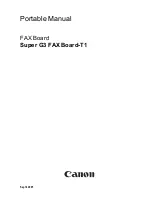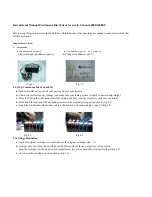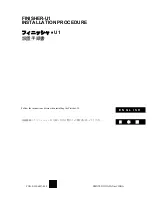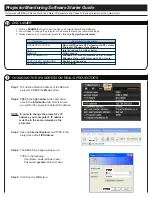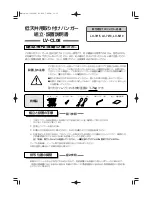
28
SP Series Info Central: Setup
blocking regions and you do not need to add them to the blocking bitmap. The following table provides the starting
points and dimensions for the blocking areas of standard card features.
Blocking typically extends 0.1 inch (2.5 mm) beyond the edges of a feature. When you create a customized
blocking area, you must extend the blocking area for raised features (if you use them). The table of features
includes the extended blocking region. For features that are not raised, such as an area for applying scratch-off
ribbon, you will have more predictable results if you extend the blocking area.
Tips for success
•
You should be familiar with editing graphics to modify the blocking bitmap. If you are not comfortable editing the
graphic, obtain the assistance of your Datacard®-approved service provider or a graphics professional.
•
To edit the graphic, you need to have write permission to hidden, operating system folders. Choose Control
Panel and then Users to set permissions for the user. Search for “User permissions” in Windows help for details
on setting permissions. The user must also be able to view hidden operating system folders and files. Choose
Tools and then Folder Options in My Computer or Windows Explorer to change view options.
•
The purpose of topcoat is to protect the printed image on the card. Any area with color printing will eventually
fade if it lacks protection. Make sure that most printing is covered with topcoat. Do not leave large printed areas
without topcoat unless you will be applying additional protection, such as a patch (using an SP75 printer with
laminator).
•
Plan to produce several test cards to verify that blocking works correctly on the range of cards you will produce.
•
You might want to copy the Datacard-provided blocking bitmaps to a second location so you can start over with
editing if needed. If you will include a graphic image, save the graphic image file with a new name before
modifying it to work with a blocking bitmap. You can delete the extra files after you have successfully completed
customization. Finally, you might want to save a copy of the completed blocking graphic in a second location in
case you want to restore it at a later time.
Feature
Starting point
a
a.
From upper left corner of the card
width
b
b.
Distance from starting point toward right edge of the card
height
c
c.
Distance from starting point toward to lower edge of the card
Smart Card Chip,
Landscape Orientation
55, 158 pixels
0.18, 0.53 inch
4.6, 13.5 mm
236 pixels
0.79 inch
20.1 mm
225 pixels
0.75 inch
19.1 mm
Smart Card Chip,
Portrait Orientation
255, 55 x pixels
0.85, 0.18 inch
21.6, 4.6 mm
225 pixels
0.75 inch
19.1 mm
236 pixels
0.79 inch
20.1 mm
3-track magnetic stripe,
Landscape Orientation
0, 0 pixels
0.0 inch
0.0 mm
1013 pixels
3.37 inch
85.6 mm
198 pixels
0.66 inch
16.8 mm
2-track magnetic stripe,
Landscape Orientation
0, 0 pixels
0.0 inch
0.0 mm
1013 pixels
3.37 inch
85.6 mm
162 pixels
0.55 inch
14.0 mm
NTT magnetic stripe,
Landscape Orientation
0, 0 pixels
0.0 inch
0.0 mm
1013 pixels
3.37 inch
85.6 mm
156 pixels
0.52 inch
13.2 mm
Summary of Contents for Datacard SP35
Page 3: ...2 SP Series Install e Guide ...
Page 7: ...6 SP Series Install e Guide ...
Page 11: ...10 SP Series Install e Guide ...
Page 17: ...16 SP Series Install e Guide ...
Page 21: ...20 SP Series Install e Guide ...
Page 23: ...22 SP Series Install e Guide ...
Page 43: ...42 SP Series Install e Guide ...
Page 49: ...48 SP Series Install e Guide ...
Page 55: ...54 SP Series Install e Guide ...
Page 119: ...2 SP Series Production e Guide ...
Page 121: ...2 SP Series Production e Guide ...
Page 125: ...6 SP Series Production e Guide ...
Page 137: ...18 SP Series Production e Guide ...































